SSM winding machines fulfil the extensive requirements of the yarn dyeing process with a wide range of products and recognized state-of-the-art technologies.
Dye Packages and Rewinding Machines
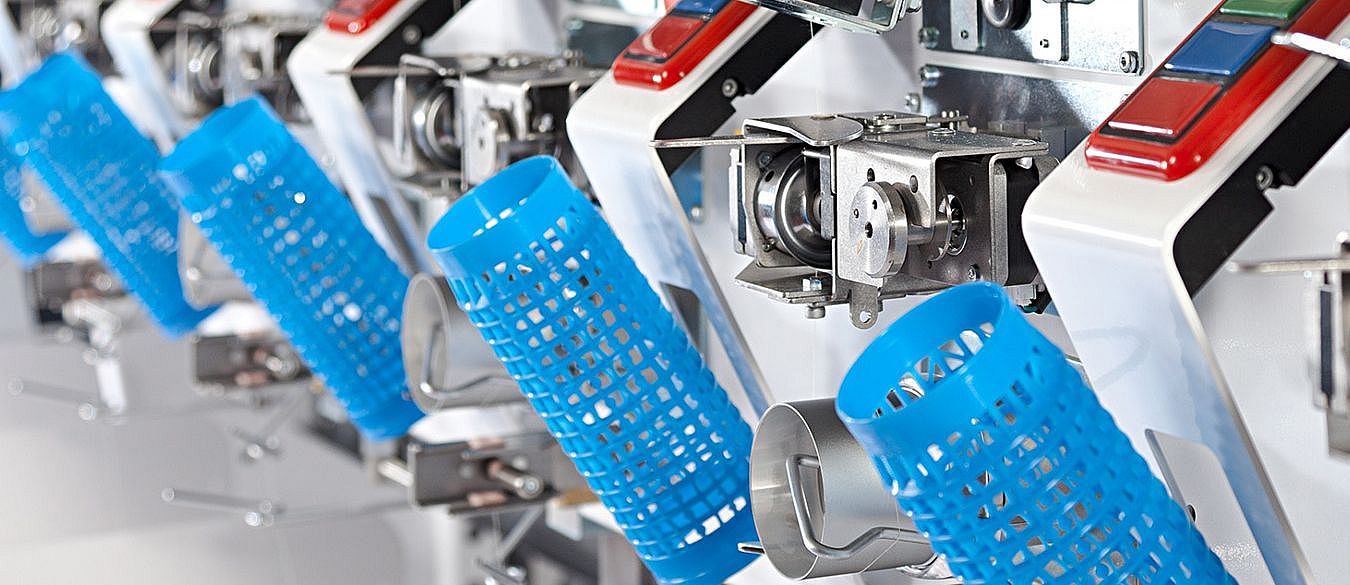
NEO-FW Precision Package Winder
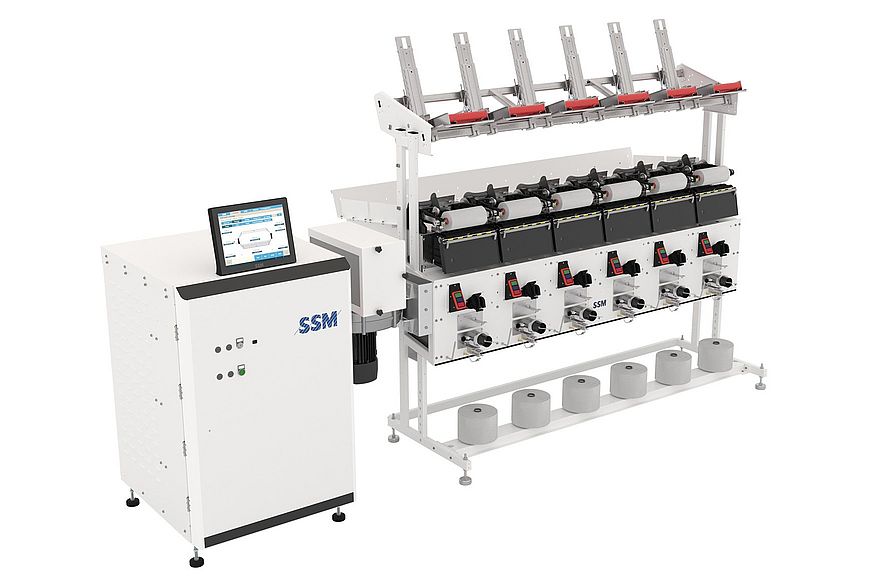
The NEO-FW is a precision package winding machine for all kind of staple and textured filament yarns suitable for dye package winding, warping preparation and rewinding with or without lubrication or waxing. Equipped with the latest technology from SSM, it is the machine for tailor-made cross-wound packages, which cuts down maintenance and service costs to a minimum.
Technical data
| NEO-FW precision package winder | |
|---|---|
| Type of winding | DIGICONE 2 or precision |
| Mechanical speed | up to 1 500 m/min |
| Drive | individual |
| Yarn laying | fastflex electronic yarn laying system |
| Package shape | freely programmable |
| Take-up tubes | cylindrical or cones up to 5° 57' |
| Traverse length | 25 – 210 mm electronically adjustable |
| Yarns | staple yarns and textured filament yarns |
| Yarn count | Ne 3 – 80 |
| Number of spindles min./max. | 6/96 (single sided) and 12/120 (double sided, 2 × 60 back to back) |
Downloads
NEO-YW Precision Package Winder
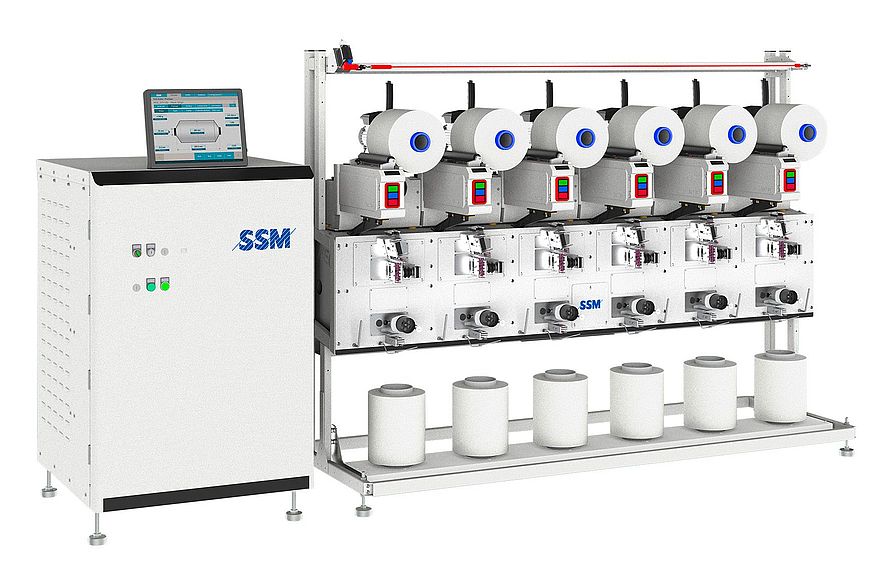
Only a quick response to market trends in combination with high cost-efficiency enable yarn dyers to be successful with competitive advantages. The unique features of the NEO-YW offer clear benefits to dye package winding and rewinding of all types of filament and staple yarns, with or without lubrication.
Technical data
| NEO-YW precision package winder | |
|---|---|
| Type of winding | DIGICONE 2 or precision |
| Mechanical speed | up to 2 000 m/min |
| Drive | individual |
| Yarn laying | fastflex electronic yarn laying system |
| Package shape | freely programmable |
| Take-up tubes | cylindrical or cones up to 5° 57' (for filaments up to 3° 30') |
| Traverse length | 25 – 270 mm electronically adjustable |
| Yarns | textured or flat filaments, elastic yarns, silk, fine technical yarns, staple yarns |
| Yarn count | 10 – 3 000 dtex |
| Number of spindles min./max. | 6/96 (single sided) and 12/120 (double sided, 2 × 60 back to back) |
NEO-BW Precision Package Winder
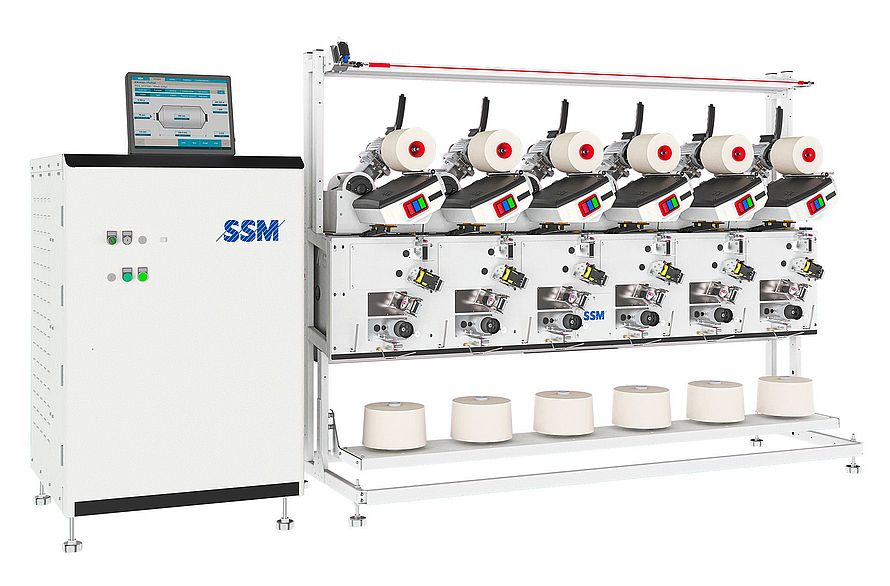
The key success factor of the NEO-BW precision winding machine is the unique yarn laying system with counter-rotating blades, which has established itself as a system for high speeds while being gentle to the yarn. The rotating motion of the blades is almost wear-free and ensures the highest production speeds with the lowest possible operating costs.
Technical data
| NEO-BW precision package winder | |
|---|---|
| Type of winding | DIGICONE 2 or precision |
| Mechanical speed | up to 1 600 m/min |
| Drive | individual |
| Yarn laying | yarn laying system with counter rotating blades |
| Package shape | cylindrical or conical |
| Take-up tubes | cylindrical or cones up to 4° 20' |
| Traverse length | 155 mm mechanically adjustable ±5 mm |
| Yarns | all kinds of staple yarns |
| Yarn count | Ne 1.2 – 120 |
| Number of spindles min./max. | 6/96 (single sided) and 12/120 (double sided, 2 × 60 back to back) |
Downloads
XENO-YW Precision Package Winder
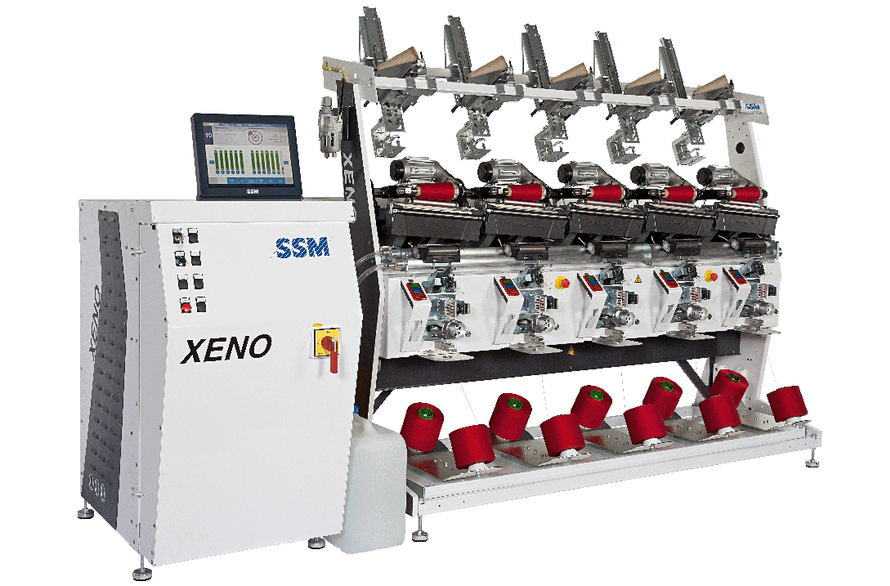
The XENO-YW is a precision winding machine for all kind of staple and filament yarns suitable for dye package winding, warping preparation and rewinding with a range of options and executions.
Technical data
| XENO-YW precision package winder | |
|---|---|
| Type of winding | DIGICONE 2 or precision |
| Mechanical speed | up to 2 500 m/min |
| Drive | individual |
| Yarn laying | fastflex electronic yarn laying system |
| Package shape | freely programmable |
| Take-up tubes | cylindrical or cones up to 5° 57' |
| Traverse length | 25 – 270 mm electronically adjustable |
| Yarns | staple yarns, monofilament, textured, flat and twisted filaments, medium technical yarns |
| Yarn count | Ne 1.5 – 240 |
| Number of spindles min./max. | 5/80 (single sided) and 10/80 (double sided, 2 × 40 back to back) |
Downloads
XENO-YW precitens Combi Winder
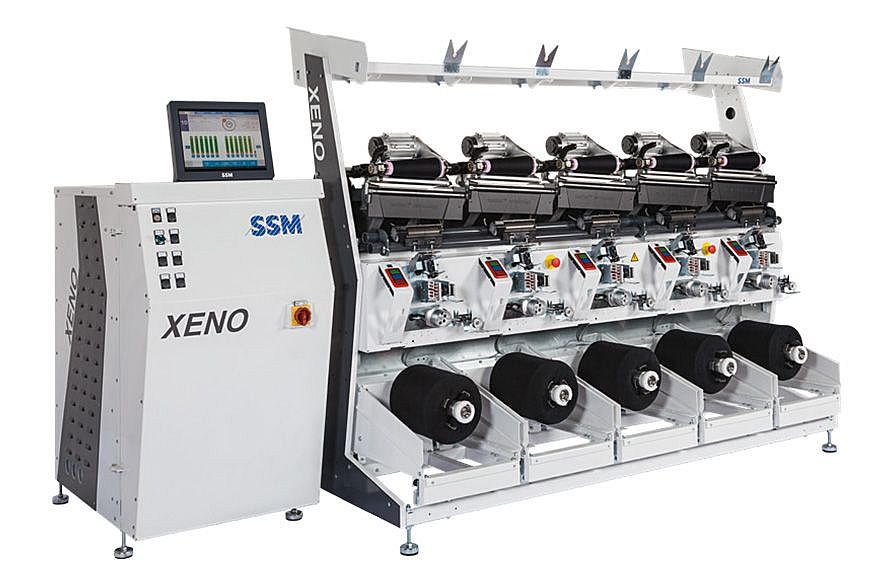
Thanks to its unique design, the XENO-YW precitens is a versatile machine for both, muff preparation (CTM) as well as rewinding of the muffs after dyeing (MTC). For the customer this results in higher flexibility, lower investment costs and last but not least, more profit.
Technical data
| XENO-YW precitens, combi winder | |
|---|---|
| Type of winding | DIGICONE 2 or precision |
| Mechanical speed | up to 2 500 m/min |
| Drive | individual |
| Yarn laying | fastflex electronic yarn laying system |
| Package shape | freely programmable |
| Take-up tubes | cylindrical or cones up to 3° 30' |
| Traverse length | 25 – 270 mm electronically adjustable |
| Yarns | high elastic filament yarns (PA or PES DTY) |
| Yarn count | 22 – 800 dtex |
| Number of spindles min./max. | 5/60 (single sided) |
Downloads
DURO-TW Precision Package Winder for Technical Yarns
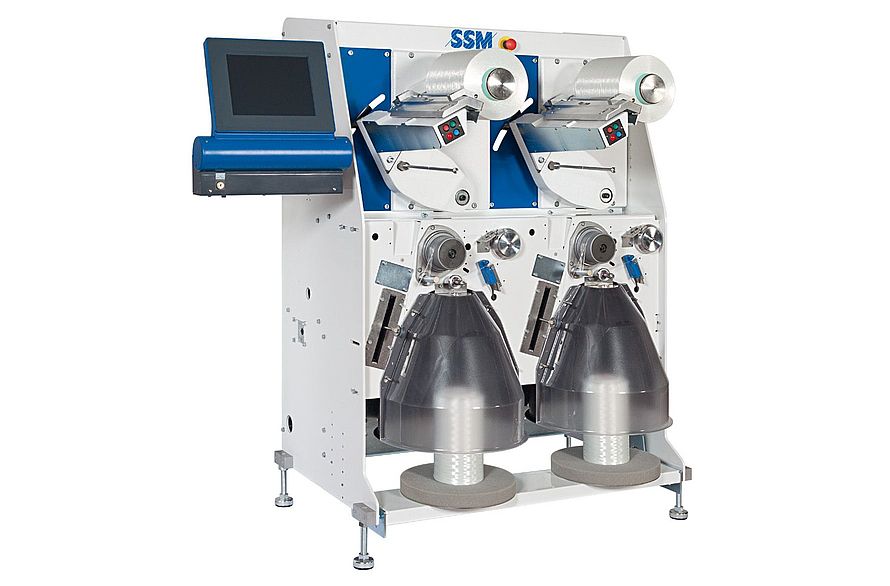
The DURO-TW precision winder for technical yarns up to 50 000 dtex offers a new level of flexibility and winding quality in one machine; thereby ensuring the fulfillment of all customer requirements.
Technical data
| DURO-TW precision package winder, technical yarns | |
|---|---|
| Type of winding | DIGICONE or precision |
| Mechanical speed | up to 1 500 m/min |
| Drive | individual |
| Yarn laying | fastflex electronic yarn laying system |
| Package shape | freely programmable |
| Take-up tubes | cylindrical or cones up to 3° 30' |
| Traverse length | 25 – 320 mm infinitely variable |
| Yarns | all staple and filament yarns |
| Yarn count | up to 50 000 dtex |
| Number of spindles min./max. | 2/40 (single sided) |
Downloads
PWX-CTM Cone-to-Muff Winder
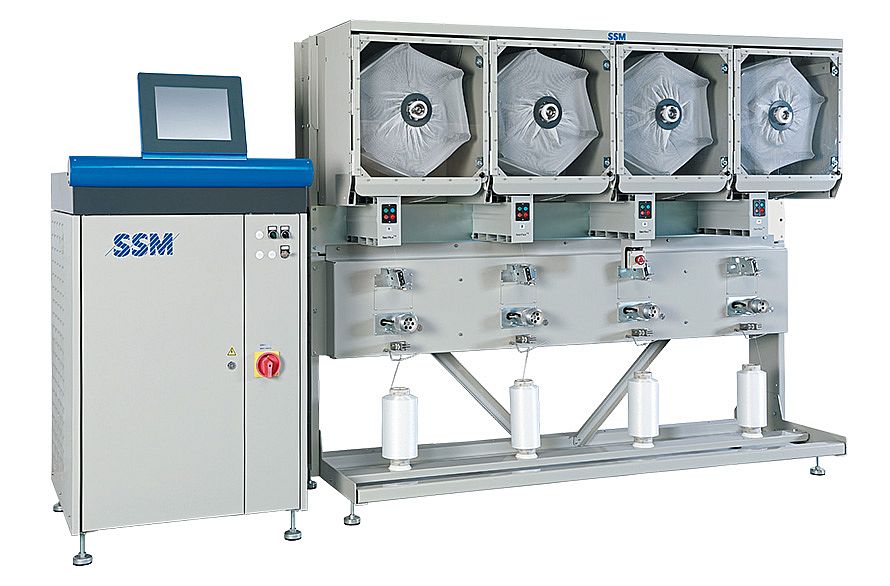
To maintain a high residual elasticity of false-twist textured (DTY) polyamide (PA) and polyester (PES) after dyeing, SSM's muff winding process is the best solution.
Technical data
| PWX-CTM cone-to-muff winder | |
|---|---|
| Type of winding | DIGICONE or precision |
| Mechanical speed | up to 1 500 m/min |
| Drive | individual |
| Yarn laying | fastflex electronic yarn laying system |
| Package shape | freely programmable |
| Take-up tubes | 200 – 350 or 250 – 500 mm |
| Traverse length | 25 – 270 mm electronically adjustable |
| Yarns | all elastic filament yarns (PA or PES DTY) |
| Yarn count | 10 – 1 200 dtex |
| Number of spindles min./max. | 4/48 (single sided) |
Downloads
PWX-MTC Muff-to-Cone Winder
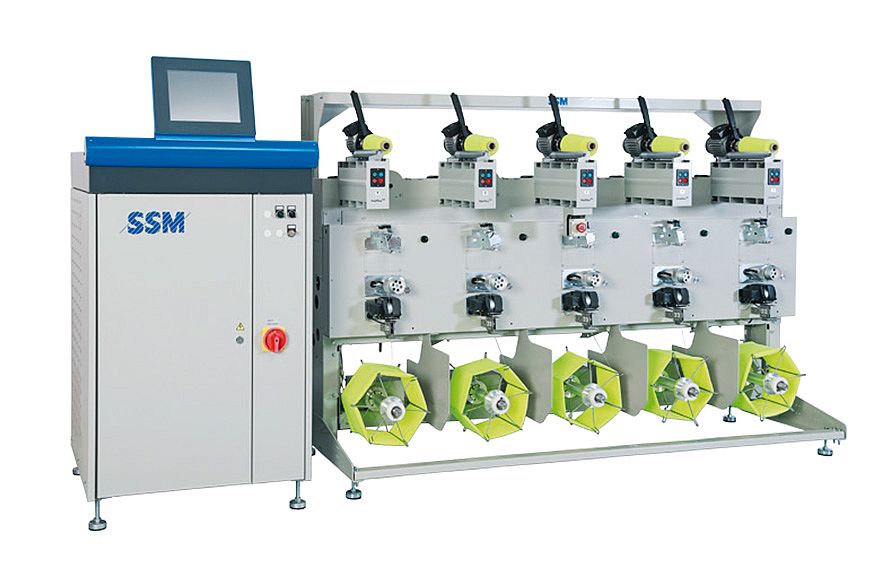
The PWX-MTC is the ideal machine for rewinding of high elastic Polyamide (PA) and polyester (PES) draw textured yarns (DTY) after dyeing. The online tension controlled, positively driven unrolling system precitens offers the highest flexibility and productivity.
Technical data
| PWX-MTC muff-to-cone winder | |
|---|---|
| Type of winding | DIGICONE or precision |
| Mechanical speed | up to 1 200 m/min |
| Drive | individual |
| Yarn laying | fastflex electronic yarn laying system |
| Package shape | freely programmable |
| Take-up tubes | cylindrical or cones up to 3° 30' |
| Traverse length | 25 – 270 mm electronically adjustable |
| Yarns | all elastic filament yarns (PA or PES DTY) |
| Yarn count | 10 – 1 200 dtex |
| Number of spindles min./max. | 5/60 (single sided) |
Downloads
CWX-W Rewinding Machine
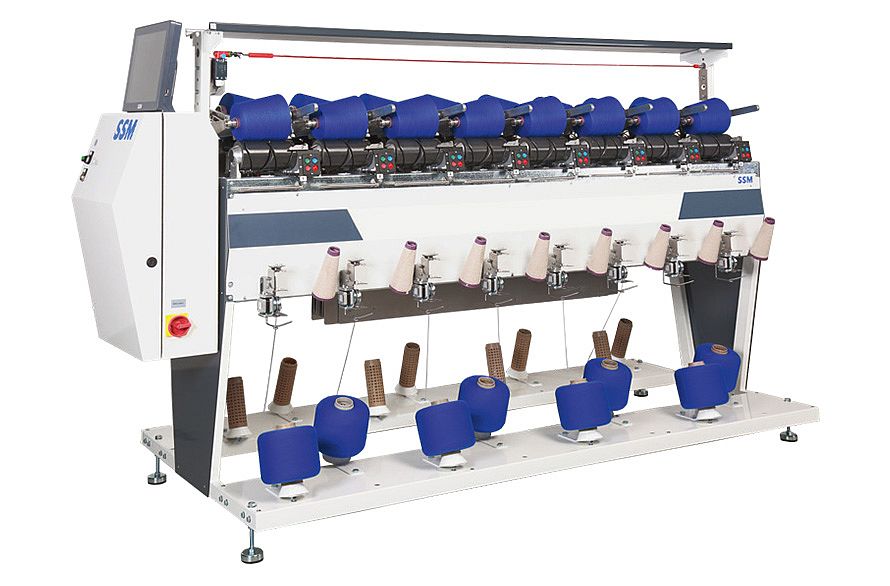
The CWX-W, the energy-efficient drum winder is a rewinding machine for cones used in the weaving, warp knitting and circular knitting process.
Technical data
| CWX-W random winding machine | |
|---|---|
| Type of winding | random |
| Mechanical speed | up to 1 500 m/min |
| Drive | individual |
| Yarn laying | yarn laying system with grooved drum |
| Package shape | cylindrical or cones |
| Take-up tubes | cylindrical or cones up to 5° 57' |
| Traverse length | 152 mm (6˝) |
| Take-up package diameter | up to 270 mm |
| Yarns | staple yarns |
| Yarn count | Ne 3 – 120 |
| Number of spindles min./max. | 16/128 (8 double-sided sections) |
Downloads
Downloads
SSM Product Range – Brochure

Contact
SSM always wants to answer queries quickly and competently.